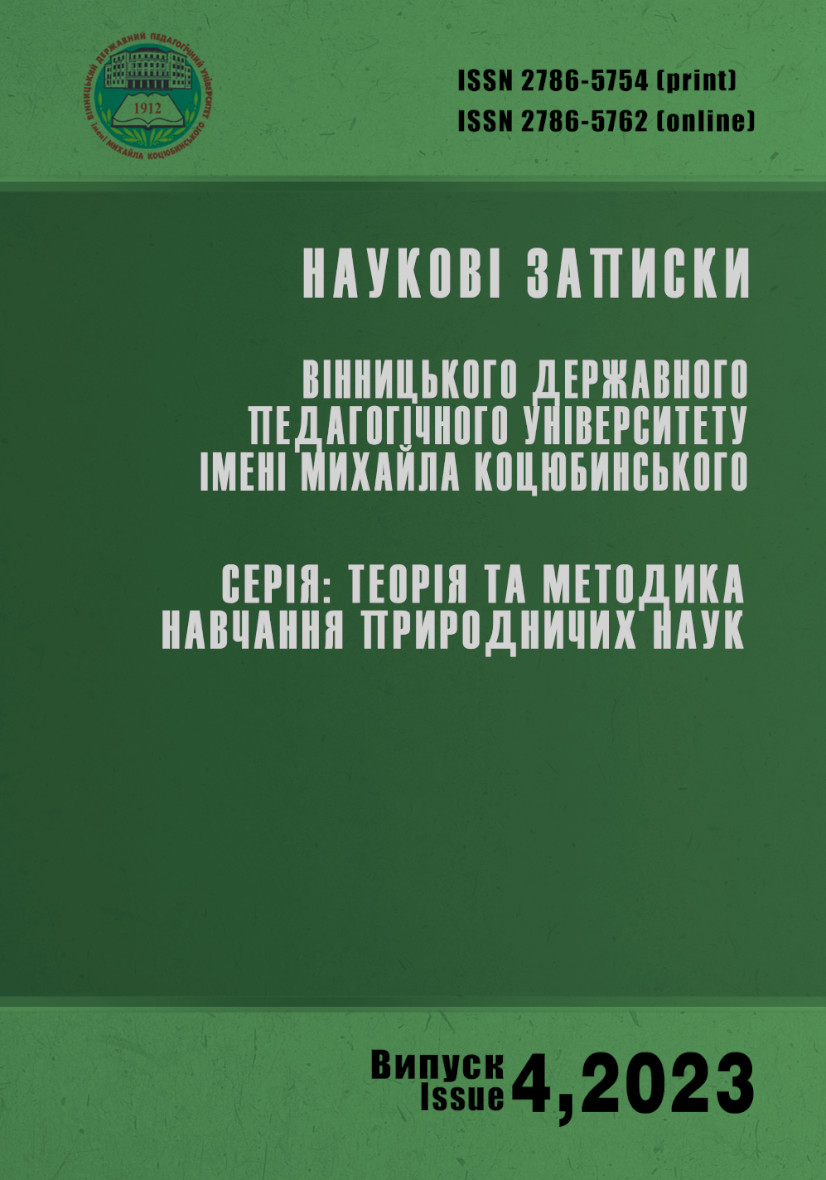Abstract
The article justifies the application of new directions in the development of geographical science and their use in geography lessons in the New Ukrainian School. The aim of the article is to analyze the possibilities of using constructive innovations in geography lessons for elementary school students and to develop the main ways of their implementation in the educational process. The article proposes that AR/VR/MR technologies can be effectively used in the educational process, scientific research, expanding the creative abilities of talented youth, and the full development of people with disabilities.
Virtual reality allows for the modification of scenarios, the ability to influence the course of experiments, or the ability to solve tasks in a gaming and accessible format. By immersing themselves in a virtual world for educational or research purposes, students can focus on the necessary material without being distracted by external stimuli, as the field of view is 360 degrees. In the context of distance learning, participants in the educational process can be remote from educational institutions. One of the main advantages of using virtual technologies in education is the ability to learn at any time and in any place, providing greater flexibility and accessibility to education for students from different parts of the world. Of course, virtual education cannot fully replace traditional, in-class forms of education. However, virtual technologies can be a very useful tool for complementing traditional education and providing additional opportunities for students in the learning process.
Modern technologies allow us to create incredible virtual landscapes that are almost identical to natural ones in terms of sound and visual effects, making it possible to imagine and
analyze the dynamics of natural and anthropogenic phenomena. It is time for their widespread use not only in explaining complex laws but also in creating educational platforms in geography or other related natural sciences, integrating them with each other.
For an effective transition from subject-centeredness to child-centeredness, it is important to search for and then apply appropriate constructive innovations in the educational process. This will not only allow for better assimilation of geography material based on visualization but also awaken scientific interest among students and activate their participation in scientific research work.
References
Варакута О. Календарно-тематичне планування. Природознавство. 5 клас. Географія. 6-11 класи (рівень стандарту, академічний рівень). Тернопіль: Підручники і посібники, 2020. 160 с.
Гнедько Н.М. Формування готовності майбутніх учителів до використання засобів віртуальної візуалізації у професійній діяльності: автореф. доктор філософії пед. наук: Рівне, 2015.
Гощинський А.В. Інноваційний розвиток мережевих організацій віртуального типу. Економічний простір. 2009. № 12. С. 42-48.
Засєкін А. Віртуальне спілкування як чинник особистісних змін студентської молоді: автореф. дис. … канд. психол. наук. Київ. ун-т ім. Б. Грінченка. 2012. 20 с.
Канський В. С., Канська В. В. Створення динамічних віртуальних 3-D моделей ландшафтів та їх практичне застосування у навчальному процесі. Наукові записки Вінницького державного педагогічного університету імені Михайла Коцюбинського. Серія: Географія. Вип. 30, № 1-2. Вінниця, 2018. С. 11-16.
Климнюк В. Є. Віртуальна реальність в освітньому процесі. Збірник наукових праць Харківського національного університету Повітряних Сил. 2018. № 2. С. 207-212.
Крюкова Є.С., Голуб Т.П., Амерідзе О.С. Використання імерсивних технологій в освіті. Вип. 32. Т. 2. 2021. Режим доступу: http://www.innovpedagogy.od.ua/archives/2021/32/part_2/39.pdf (дата звернення: 07.03.2023).
Лемешко Ю.С. Синергетична модель управління проектами організації системи знань віртуального університету: автореф. дис. ... кандидата технічних наук: Національний трансп. ун-т. Київ, 2010. 20 с.
Литвинова С. Г. Методика використання вчителем технологій віртуального класу в організації індивідуальної підготовки студентів: автореф. дисертації. ... кандидата пед. наук / Ін-т інформаційних технологій і засобів навчання НАН України. Київ, 2011. 20 с.
Мельник І., Задерей Н., Нефьодова Г. Доповнена та віртуальна реальність як ресурс навчальної діяльності студентів. URL: http://itcm.comp-sc.if.ua/2018/melnuk.pdf (дата звернення: 09.03.2023).
Павлюк Р.О. Формування умінь майбутніх учителів іноземних мов для здійснення віртуальної педагогічної взаємодії: автореф. дис. … канд. педагогічних наук. Вінниця, 2009 р. 23 с.
Петренко-Лисак А.О. Соціальні детермінанти кібервіртуального простору: автореф. дис... канд. соціол. наук. Київ, 2007. 16 с.
Петриця А. Н. Співвідношення віртуального та реального в навчальному експерименті в процесі вивчення фізики в початковій школі: автореф. дисерт. на ступінь канд. пед. наук. Кіровоградський держ. пед. ун-т імені В. Винниченка. Кіровоград, 2010. 20 с.
Трач Ю. VR-технології як метод і засіб навчання. Освітологічний дискурс. 2017. № 3-4. С. 309-322. DOI: https://doi.org/10.28925/2312-5829.2017.3-4.3932
Cummings J. J., & Bailenson J. N. How immersive is enough? A meta-analysis of the effect of immersive technology on user presence. Media Psychology. 2016. No 19 (2). P. 272–309. DOI: https://doi.org/10.1080/15213269.2015.1015740
Dede C. Immersive interfaces for engagement and learning. Science. 2009. No 323 (5910). Р. 66-69. DOI: https://doi.org/10.1126/science.1167311
Mikropoulos T. A., & Natsis A. Educational virtual environments: A ten-year review of empirical research (1999-2009). Computers and Education. 2011. No 56 (3). Р. 769-780. DOI: https://doi.org/10.1016/j.compedu.2010.10.020
Potkonjak V., Gardner M., Callaghan V., Mattila P., Guetl C., Petrović V. M., & Jovanović K. Virtual laboratories for education in science, technology, and engineering: A review. Computers and Education. 2016. No 95. Р. 309-327. DOI: https://doi.org/10.1016/j.compedu.2016.02.002

This work is licensed under a Creative Commons Attribution 4.0 International License.
Copyright (c) 2023 Вікторія Канська; Володимир Канський, Анжеліка Дишкант

